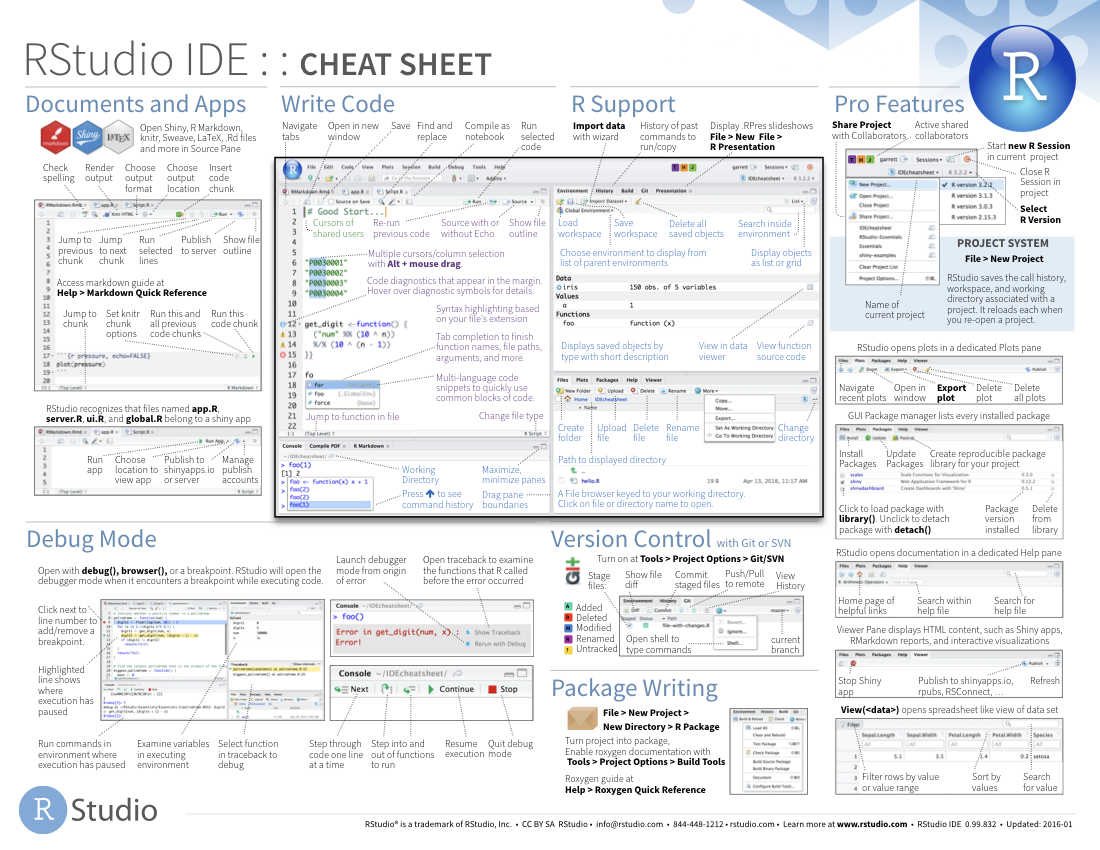Tools to help to create tidy data, where each column is a variable, each row is an observation, and each cell contains a single value. Tidyr contains tools for changing the shape (pivoting) and hierarchy (nesting and unnesting) of a dataset, turning deeply nested lists into rectangular data frames (rectangling), and extracting values out of string columns. It also includes tools for working.

The tidyverse is an opinionated collection of R packages designed for data science. All packages share an underlying design philosophy, grammar, and data structures. Install the complete tidyverse with: install.packages('tidyverse'). Now, DataCamp has created a tidyverse cheat sheet for beginners that have already taken the course and that still want a handy one-page reference or for those who need an extra push to get. R source code for 'Modeling with Data in the Tidyverse' DataCamp, Nmegazord commented on Aug 5. Excellent work, and a fantastic course! The core tidyverse includes the packages that you’re likely to use in everyday data analyses. As of tidyverse 1.3.0, the following packages are included in the core tidyverse: ggplot2 ggplot2 is a system for declaratively creating graphics, based on The Grammar of Graphics.

Subsetting using the tidyverse
You can also subset tibbles using tidyverse functions from package dplyr. dplyr verbs are inspired by SQL vocabulary and designed to be more intuitive.
The first argument of the main dplyr functions is a tibble (or data.frame)
Filtering rows with filter()
filter() allows us to subset observations (rows) based on their values. The first argument is the name of the data frame. The second and subsequent arguments are the expressions that filter the data frame.
dplyr executes the filtering operation by generating a logical vector and returns a new tibble of the rows that match the filtering conditions. You can therefore use any logical operators we learnt using [.
Slicing rows with slice()
Using slice() is similar to subsetting using element indices in that we provide element indices to select rows.
Selecting columns with select()
select() allows us to subset columns in tibbles using operations based on the names of the variables.
R Tidyverse Cheat Sheet Pdf
In dplyr we use unquoted column names (ie Volume rather than 'Volume').
Cheat Sheet Tidyverse
Behind the scenes, select matches any variable arguments to column names creating a vector of column indices. This is then used to subset the tibble. As such we can create ranges of variables using their names and :
Cheat Sheet Tidyverse
There’s also a number of helper functions to make selections easier. For example, we can use one_of() to provide a character vector of column names to select.
